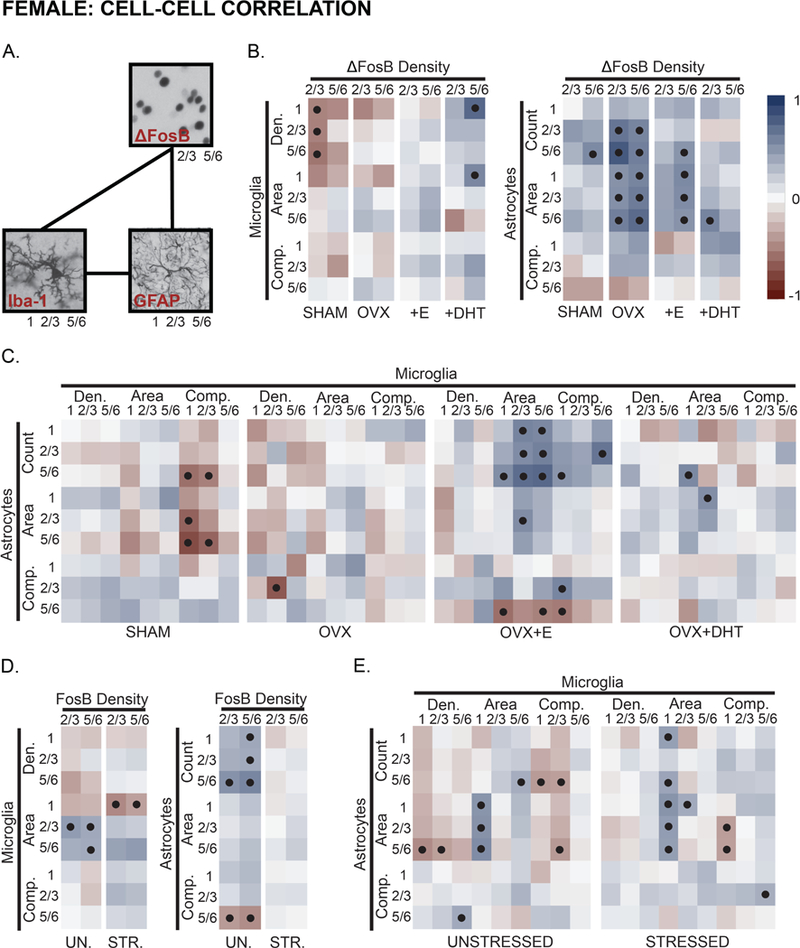Fig 9.

Hormone- and stress- effects on neuronal activity-glia, and microglia-astrocyte associations in prelimbic cortex in female rats. A. Similar to males, main effects of hormone treatment and stress on associations between neuronal activity (ΔFosB expressing cells) and glia, alongside coupling of microglia-astrocyte measures were examined using Pearson’s correlation coefficients in females. B. Measures of microglial density and morphology were weakly- or negatively- associated with neuronal activity in females. Hormone manipulation shifted this pattern, whereas treatment with DHT induced coupling between neuronal activity and microglial measures. Neuronal activity was generally associated with astrocyte morphology in females; this relationship was strongest in OVX females. C. Measures of microglial and astrocyte morphology were negatively correlated in SHAM females. OVX reduced this association, whereas treatment with E strengthened connections between astrocyte number and microglial morphology. Associations between microglia and astrocytes were, overall, similar in OVX and OVX+DHT animals. D. Stress shifted patterns of neuronal activity-microglial coupling, and reduced neuronal activity-astrocyte associations. E. Measures of microglial and astrocyte morphology were, generally, negatively associated. Stress weakened or reversed this pattern. Positive (red tone) and negative (blue tone) correlation coefficients are represented by matrix color. • p < .05. Layer noted as 1, 2/3, and 5/6. See Fig 7–8 and Supplementary Fig 2 for number of animals analyzed per group.
